Recently Bagh Durbar located near the erstwhile Bhimsen Tower ‘Dharahara’ at the heart of Kathmandu city was in the news as the Municipality had more or less decided to demolish a historical building adversely affected by the earthquake of 2015 instead of renovating and retrofitting it. Many have raised their voices against such a historical place being leveled to give rise to yet another shopping mall without the valley’s soul. It would be another example of a potpourri of architectural styles prevalent in the unimpressive designs adorning Kathmandu’s march to modernity. Mrs. Chanda Rana is one of the advocates of preservation of this historic building and kudos to her.
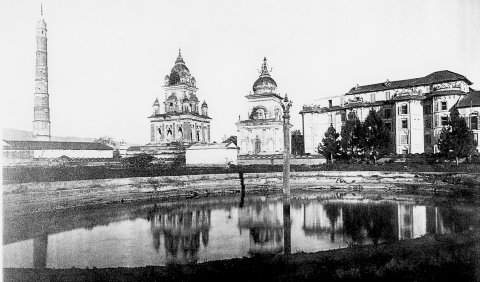
What is the genesis of this historic building? What cries and whispers pervaded its corridors when the powerful were residing there? What were the historical epoch its bricks and mortars witnessed that would shape the destiny of the movers and shakers of the nation? Will all this be lost forever in the drive to demolish it and for the politicians and contractors to reap a rich reward in commissions and bribes?
Bhimsen Thapa Chapter: Bhimsen Thapa, Prime Minister of Nepal, 1806-1837 A.D.
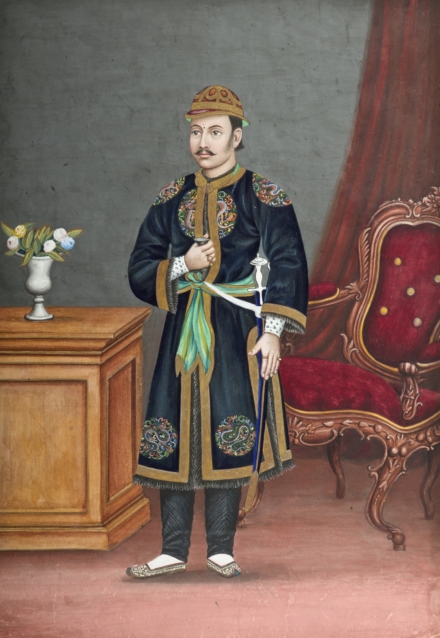
Prime Minister Bhimsen Thapa
Prime Minister Bhimsen Thapa is credited to have built the Bagh Durbar along the Mughal-style architecture prevalent in palaces of India before the British inevitably brought their own neo-classical designs of Europe. He inherited the grounds from his father Amar Singh Thapa and moved in there in 1805 A.D. from Thapathali Durbar, the ancestral abode of the Thapa clan. Bagh Durbar or the Garden Palace was the abode of the prime minister for a very long time as he ruled Nepal for 32 eventful years. The urban legend of the building being named after real tigers being kept at its gate – as ‘bagh’ in Nepali language is tiger – made it a forbidden location for the general populace to venture without sufficient good reason. We can clearly see Bhimsen strategizing his war against British India from this edifice. We can visualize him holding countless parleys with his many generals of an expanding Gorkha Empire. He also spent many sleepless nights there when the proud Gorkhali army had to accede to British military pressure and sign the Treaty of Sugauly that stymied Gorkha expansion once and for all. And then finally he was plucked from his palace and jailed when time and tide of Durbari politics went against him after the death of Regent Queen Tripura Sundari and the coming of age of young King Rajendra Bikram Shah.
General Mathabar Singh Thapa Chapter: Prime Minister of Nepal, 1843 – 1845 A.D., nephew of Bhimsen Thapa
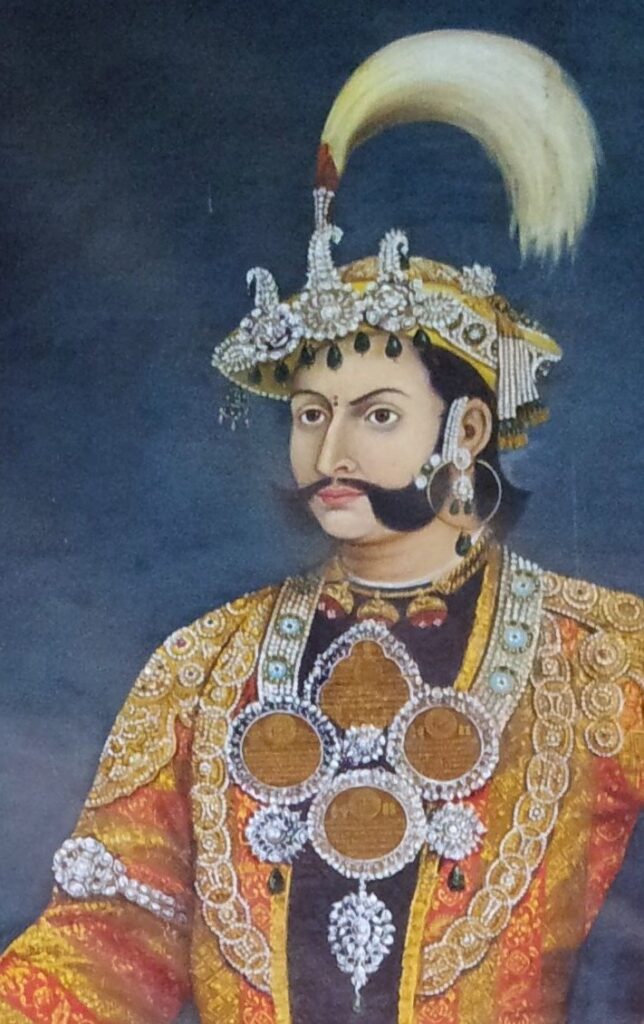
Prime Minister Mathabar Singh Thapa
With the fall of General Bhimsen Thapa the building went to the government until Junior Queen Rajya Luxmi Devi brought back Bhimsen’s nephew General Mathabar Singh Thapa from exile in the Punjab to lead her government. Mathabar claimed Bagh Durbar now through his Thapa lineage and resided there during his short tenure as prime minister of Nepal. After the assassination of Mathabar and the Kot Massacre the building once more went to the government.
Mahila Shebjiu (Duke) Upendra Bikram Shah Chapter: younger brother of King Surendra Bikram Shah, renowned Tantric master, father of Prince Dhirendra
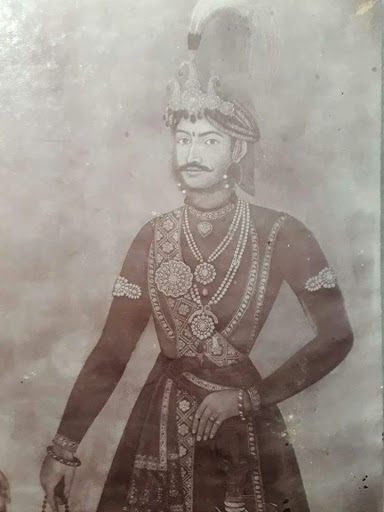
However in 1854 A.D. Prime Minister Jung Bahadur Rana renovated it and made it the official residence of Prince Upendra Bikram Shah, the younger brother of King Surendra Bikram Shah, after the former was implicated in a plot to unseat both Surendra and Jung Bahadur. No doubt Jung thought it prudent for Upendra to live away from the Hanuman Dhoka Royal Palace under virtual house-arrest so that he did not create more mischief.
After Prime Minister Jung Bahadur Rana’s passing Nepalese politics soon went into overdrive with the contending power centers of Jung’s sons and his younger brothers vying one against the other in consolidating state power. This is where once again Bagh Durbar comes into prominence in deciding who would win the game of thrones. This is when the three sisters, daughters of Jung Bahadur Rana, play their petticoat politics in ironically bringing down the house of Maharajah Jung Bahadur Rana itself. Nepalese historians have given them the names “Utpat”, “Bitpat” and “Mahapat” denoting ascending grades of disaster for their role in political conspiracies of the time.
Maharajah Jung Bahadur Rana willed the title of Maharajah of Kaski and Lumjung to his eldest son General Jagat Jung following the law of primogeniture while the prime-ministership of Nepal would go to his younger brothers in succession of seniority. General Ranauddip Singh became prime minister after Jung’s death but he was also given the title of Maharajah by King Surendra Bikram Shah in contravention to Jung’s will. A furious Jagat Jung was biding his time to get even. Jagat Jung was married to a royal princess, eldest daughter of King Surendra. He was both rich and powerful. But Jung Bahadur had remarried after Jagat Jung’s mother passed away and his Maharani Hiranya Garva Kumari had given birth to two daughters. When they came of age they were given in marriage to the royal princes. Jung’s eldest daughter Tara Rajya Luxmi was the sister of Jagat and Jung’s. The eldest daughter from Maharani Hiranya Garva was Lalita Rajya Luxmi. They were both married to Crown Prince Trailokya Bikram Shah, the Wali A’had, an Arabic title for heir apparent. It was Lalita who produced the heir to Nepal’s throne, Prithvi Bir Bikram Shah. After the untimely death of Trailokya, the infant Prithvi became the Crown Prince of Nepal.
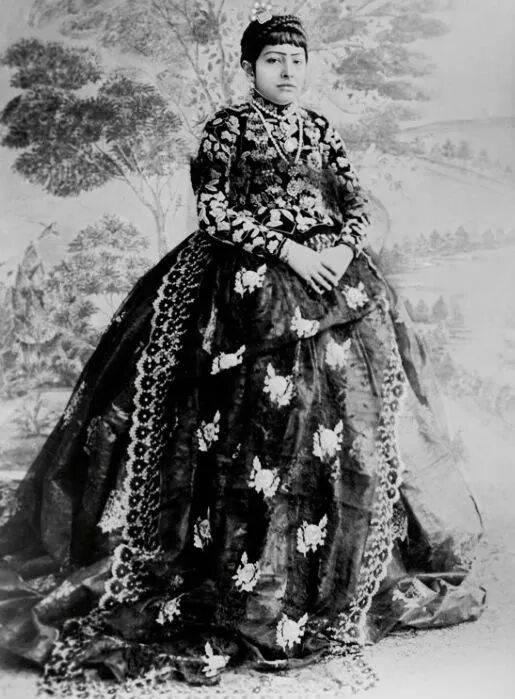
The Three Sisters Chapter: Daughters of Maharajah Jung Bahadur Rana, elder married to Crown Prince Trailokya, and the other two married to Prince Dhirendra
Maharajah Jung Bahadur’s other daughters namely “Chirbiray Maiya” Khadga Kumari, daughter from the Basnet wife Maharani Siddhi Gajendra Luxmi and “Kanchi Maiya” Deep Rajya Luxmi, younger daughter from Maharani Hiranya Garva Kumari were given in marriage to Prince Dhirendra Bikram Shah, the son of Mahila Sahebjiu Upendra and started living in Bagh Durbar. Bir, eldest son of Jung’s youngest brother Dhir Shumsher, was adopted by Jung and his Putali Maharani and hence Jung married him to the daughter of Sahebjiu Upendra, Princess Munindra Dibeshwori, elder sister of Dhirendra. Bir too started residing at Bagh because he simply had nowhere to go. This is where the plot thickens. Daughters of Maharani Hiranya Garva Kumari were dead set against state power going into the hands of their half-brother General Jagat Jung. They would rather have the sons of Dhir Shumsher take power in a coup d’etat and banish their half-brothers.
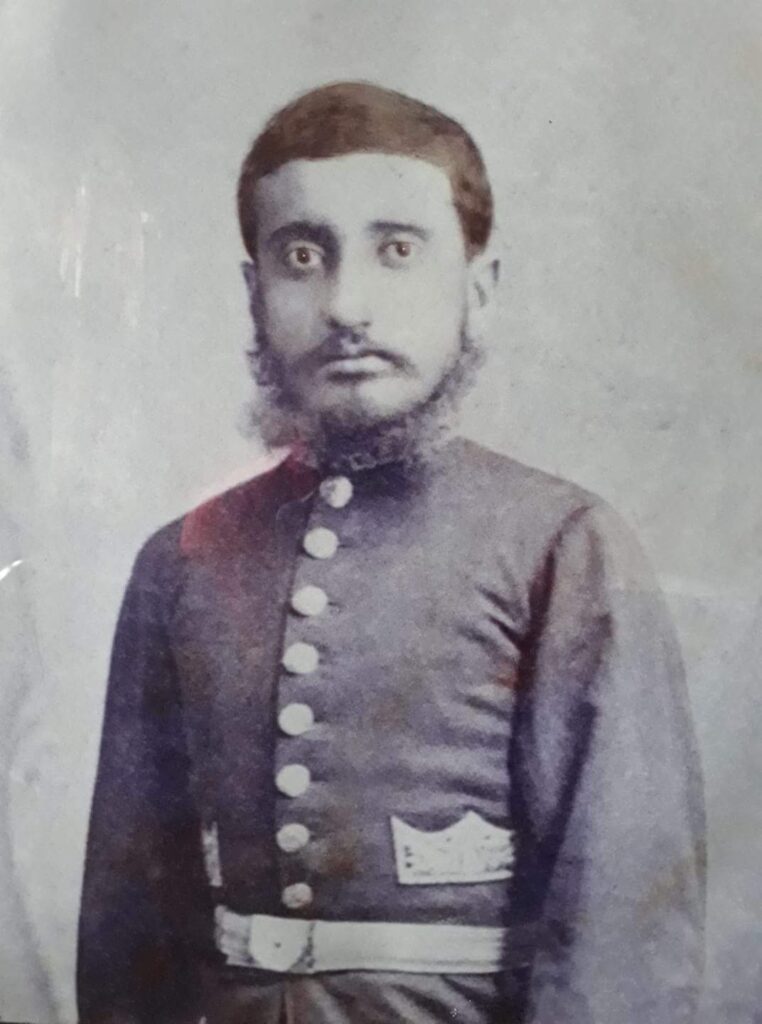
Prince Dhirendra Bikram Shah
King Surendra Bikram Shah died on 17th May 1881 A.D. and the crown went to his grandson the infant Prithvi Bir Bikram and his mother Lalita Rajeshwori was declared the Queen Regent of Nepal. Lalita “Utpat”, Khadga “Bitpat” and Deep “Mahapat” would soon swing into action.
On that fateful November night of 1885 A.D. Prime Minister Ranauddip Singh was assassinated at his Narayanhiti Palace and at the first light of the new day General Bir Shumsher had been sworn in as Maharajah of Kaski and Lamjung and Prime Minister of Nepal by the baby King Prithvi Bir Bikram carried on the arms of his mother Regent Queen Mother Lalita Rajya Luxmi Devi amidst an investiture ceremony held at Tundikhel Parade Ground.
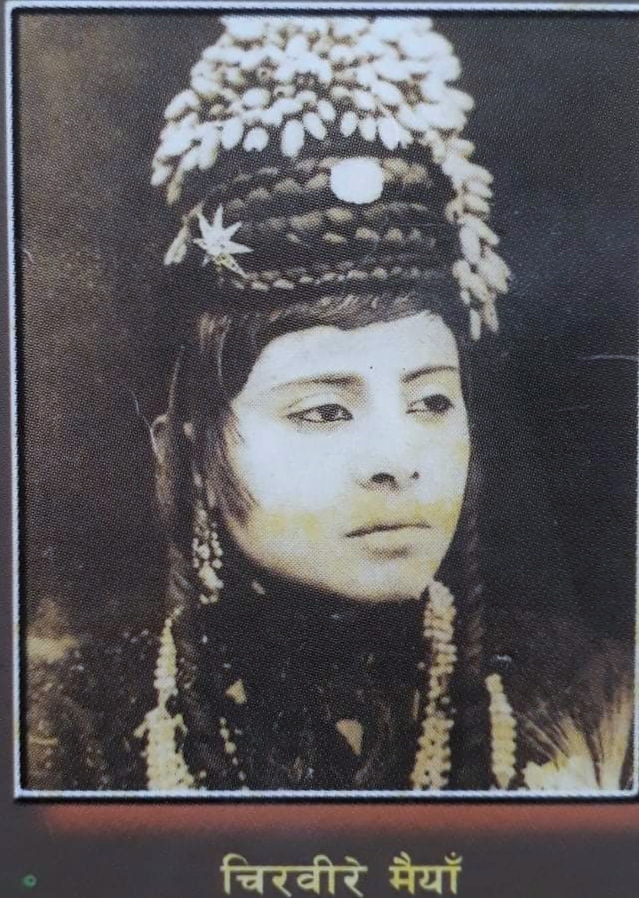
Chirbiray Maiya, Khadga Kumari, first wife of Dhirendra Bikram
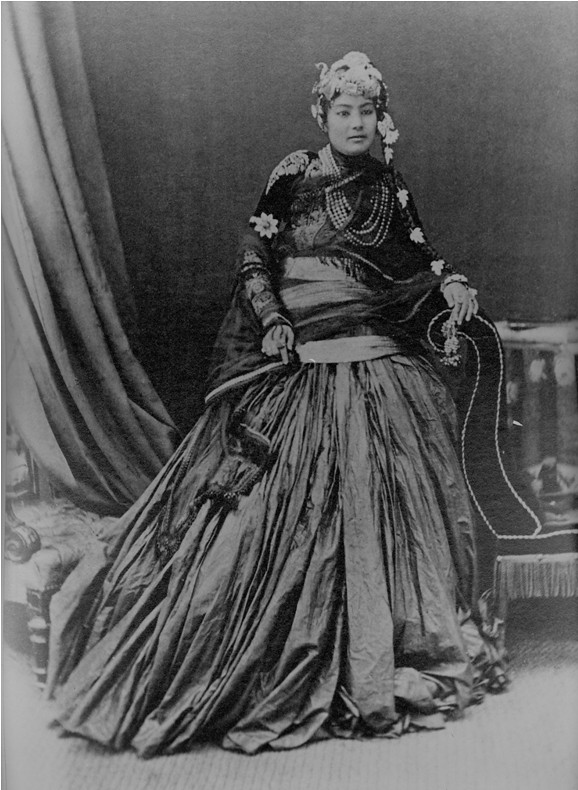
Baghki Kanchi Maiya, Deep Kumari, second wife of Prince Dhirendra Bikram
Epilogue
Would it not be a wonderful idea to have Bagh Durbar in its olden majesty made into a museum dedicated to the lives and times of General Bhimsen Thapa and Mahila Sahebjiu the tantric Upendra Bikram Shah? Last summer I visited Hampton Court Palace near London, the residence of King Henry VIII. Why don’t we turn Bagh Durbar into our own Hampton Court?


